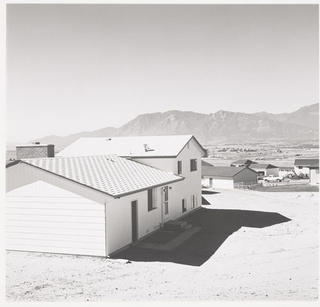 The degeneration of quality in urban space through cheap structures and mass marketing is an idea that I have been grappling with for some time. I mostly grew up in the near suburbs of Seattle but never felt interested nor entirely comfortable with the atmosphere and often sought out the less antiseptic spaces of the Pike Place Market, Capitol Hill, or the International District in search of noodles and comic books. This idea grew in my mind as I experienced the strip mall phenomenom to a greater degree in places like Los Angeles or Chicago, but it was not until my visits last year to the newly booming regions of Las Vegas and Pheonix that I was truly shocked and somewhat horrified to a degree well expressed in the article at the end of my last post. Even my native downtown Seattle or the legendary mid-town Manhattan have largely succumbed to urban space being little more than a giant mall. Living in Europe I have been able to compare the varying ideas about town planning from other countries. For example, Spain seems delighted by the idea of a growing suburban car culture with easy to access fast food stops; while Holland appears to be entirely insulated against the phenomenon.
The degeneration of quality in urban space through cheap structures and mass marketing is an idea that I have been grappling with for some time. I mostly grew up in the near suburbs of Seattle but never felt interested nor entirely comfortable with the atmosphere and often sought out the less antiseptic spaces of the Pike Place Market, Capitol Hill, or the International District in search of noodles and comic books. This idea grew in my mind as I experienced the strip mall phenomenom to a greater degree in places like Los Angeles or Chicago, but it was not until my visits last year to the newly booming regions of Las Vegas and Pheonix that I was truly shocked and somewhat horrified to a degree well expressed in the article at the end of my last post. Even my native downtown Seattle or the legendary mid-town Manhattan have largely succumbed to urban space being little more than a giant mall. Living in Europe I have been able to compare the varying ideas about town planning from other countries. For example, Spain seems delighted by the idea of a growing suburban car culture with easy to access fast food stops; while Holland appears to be entirely insulated against the phenomenon.This is one photographer that goes straight to the heart of suburbia as it was just beginning to flourish in the wild west of the United States.
Robert Adams
Born in
From a Yale Art Gallery announcement.
A large archive of images can be found here.

1 comment:
This guys is like the Ansel Adams of aluminum siding!
The southwest certainly builds suburbs on a scale that isn't attempted out here on the east coast. Last New Years I was flying into Vegas for a wedding, and the expanses of tract housing seen out the window of the plane, that stretched off to the horizion, were just stunning.
In car culture, buildings become subserviant to the larger informational system imposed by the roadways, and signage and packaging replace architectural symbolism or expression.
I wrote a paper about this for my art institute economics class, back in '97.
Post a Comment